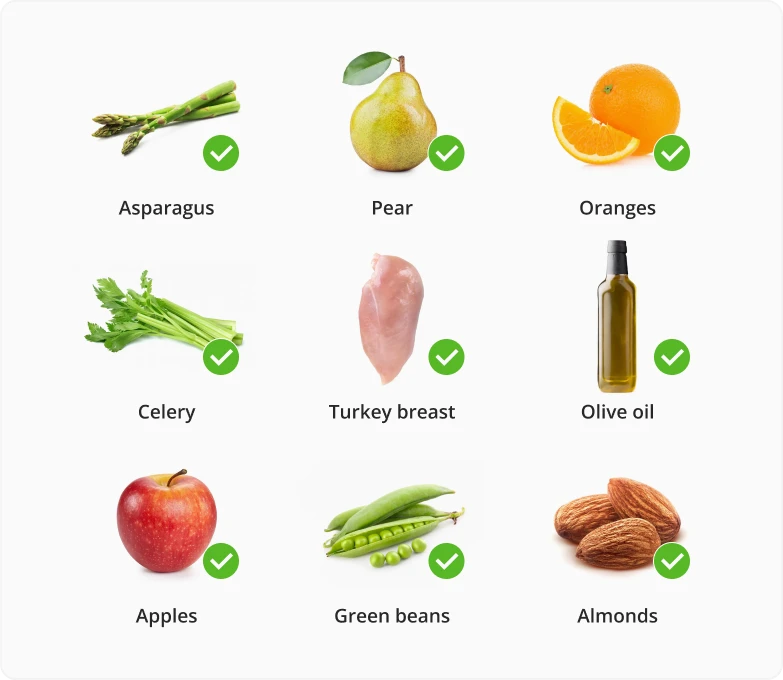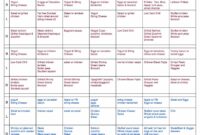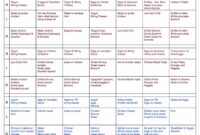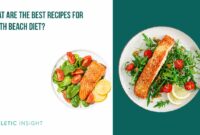South Beach Diet guidelines offer a structured approach to weight loss and improved health, focusing on balanced nutrition and controlled carbohydrate intake. This plan, divided into three phases, emphasizes the consumption of healthy fats and lean proteins while limiting processed foods and refined sugars. Understanding the principles behind each phase is key to achieving lasting results and improving overall well-being.
The diet’s emphasis on nutrient timing and glycemic index helps regulate blood sugar levels, making it suitable for individuals seeking to manage conditions like type 2 diabetes or insulin resistance. However, it’s crucial to consult with a healthcare professional before starting any new diet, particularly if you have underlying health concerns. The South Beach Diet, while effective for many, may not be suitable for everyone, and individual needs should always be prioritized.
Diet Principles of the South Beach Diet
The South Beach Diet is a low-carbohydrate diet that emphasizes healthy fats and lean protein. Unlike some other low-carb diets, it doesn’t completely eliminate carbohydrates; instead, it focuses on choosing the right kinds of carbohydrates and phasing their reintroduction. This approach aims for sustainable weight loss and improved metabolic health. The diet is structured in three phases, each with specific guidelines regarding food choices.
The Three Phases of the South Beach Diet
The South Beach Diet is divided into three phases, designed to help individuals lose weight and maintain a healthy lifestyle. Each phase progressively introduces more carbohydrates while maintaining a focus on healthy eating habits.
Phase 1: The Initial Phase (Weeks 1-2)
This phase is the most restrictive, focusing on eliminating “bad” carbohydrates and prioritizing healthy fats and lean proteins. The goal is rapid initial weight loss and to break unhealthy eating patterns.
Permitted Foods: Lean proteins (fish, poultry, lean meats), healthy fats (olive oil, avocados, nuts, seeds), non-starchy vegetables (leafy greens, broccoli, peppers), and limited amounts of low-glycemic fruits (berries).
Restricted Foods: Sugary drinks, refined carbohydrates (white bread, pasta, pastries), high-glycemic fruits (bananas, mangoes), and most processed foods.
| Food | Category | Serving Size | Calories (approx.) |
|---|---|---|---|
| Grilled Salmon | Protein | 4 oz | 200 |
| Spinach Salad with Olive Oil and Vinegar | Vegetable, Healthy Fat | 2 cups | 100 |
| Almonds | Healthy Fat | 1/4 cup | 200 |
| Chicken Breast | Protein | 4 oz | 150 |
Phase 2: The Transition Phase (Weeks 3-Onwards)
This phase gradually reintroduces some healthy carbohydrates, such as whole grains and certain fruits. The focus remains on maintaining weight loss and establishing long-term healthy eating habits. This phase continues until the goal weight is reached.
Permitted Foods: All foods permitted in Phase 1, plus whole grains (brown rice, quinoa, whole-wheat bread), legumes (in moderation), and a wider variety of fruits (excluding high-glycemic fruits in large quantities).
Restricted Foods: Sugary drinks, refined carbohydrates, and high-glycemic fruits remain restricted. Portion control is crucial.
| Food | Category | Serving Size | Calories (approx.) |
|---|---|---|---|
| Quinoa Salad with Grilled Chicken | Protein, Whole Grain | 1.5 cups | 350 |
| Brown Rice and Black Beans | Whole Grain, Legume | 1 cup | 200 |
| Apple slices with Almond Butter | Fruit, Healthy Fat | 1 medium apple, 2 tbsp | 250 |
| Turkey Breast Sandwich on Whole Wheat Bread | Protein, Whole Grain | 1 sandwich | 300 |
Phase 3: The Lifetime Maintenance Phase
This is the long-term phase focused on maintaining the weight loss achieved in the previous phases. It emphasizes mindful eating, regular exercise, and making healthy food choices a permanent part of your lifestyle.
Permitted Foods: A wider variety of foods are permitted, including some previously restricted items in moderation. The focus remains on balanced meals and portion control.
Restricted Foods: While most foods are permitted, processed foods, sugary drinks, and excessive amounts of unhealthy fats should still be limited. The emphasis is on making sustainable healthy choices.
| Food | Category | Serving Size | Calories (approx.) |
|---|---|---|---|
| Chicken Stir-fry with Brown Rice | Protein, Whole Grain, Vegetables | 1.5 cups | 400 |
| Lentil Soup with Whole Wheat Bread | Legume, Whole Grain, Vegetables | 1.5 cups | 350 |
| Baked Salmon with Roasted Vegetables | Protein, Vegetables, Healthy Fat | 4 oz salmon, 1 cup vegetables | 300 |
| Pasta with Lean Ground Turkey and Vegetables | Protein, Whole Wheat Pasta, Vegetables | 1.5 cups | 400 |
Nutritional Aspects of the South Beach Diet
The South Beach Diet distinguishes itself from other weight-loss plans through its specific approach to macronutrient ratios and its emphasis on the glycemic index and load. This focus on blood sugar control and sustained energy levels is key to its philosophy. Understanding these nutritional aspects is crucial for successful implementation and achieving long-term results.
Macronutrient Ratios in the South Beach Diet
The South Beach Diet doesn’t prescribe a rigid macronutrient ratio for all phases. However, it generally prioritizes a balance that favors lean protein and healthy fats while carefully managing carbohydrate intake. Initially, carbohydrate consumption is restricted, especially those with a high glycemic index. As the dieter progresses through the phases, the allowance for carbohydrates gradually increases, focusing on those with a lower glycemic index. This phased approach aims to stabilize blood sugar levels and reduce cravings. A typical ratio during the initial phases might see protein accounting for roughly 25-30% of daily calories, healthy fats around 40-50%, and carbohydrates making up the remaining 20-30%. These percentages shift as the diet progresses, allowing for a more balanced intake of carbohydrates over time.
The Role of Glycemic Index and Glycemic Load
The South Beach Diet heavily emphasizes the glycemic index (GI) and glycemic load (GL). The GI measures how quickly a carbohydrate-containing food raises blood sugar levels, while the GL considers both the GI and the amount of carbohydrates in a serving. The diet encourages the consumption of low-GI and low-GL foods, such as whole grains, legumes, and non-starchy vegetables, to promote sustained energy and prevent blood sugar spikes and crashes. High-GI foods, like white bread and sugary drinks, are initially restricted because they can lead to rapid increases in blood sugar, followed by energy slumps and increased hunger. Understanding and utilizing the GI and GL values helps dieters make informed food choices that support stable energy levels and weight management. For example, choosing brown rice over white rice, or opting for whole-wheat bread over white bread, are key components of the diet’s success.
Comparison to Other Popular Diets
Compared to other popular diets, the South Beach Diet occupies a unique position. Unlike the Ketogenic diet, which severely restricts carbohydrates to induce ketosis, the South Beach Diet allows for a gradual increase in carbohydrate intake, albeit focusing on low-GI options. This makes it less restrictive in the long term than the Keto diet. In contrast to the Mediterranean diet, which emphasizes a wide range of fruits, vegetables, whole grains, and healthy fats, the South Beach Diet is more structured in its initial phases, focusing on a controlled introduction of carbohydrates. However, both diets share a common emphasis on healthy fats and lean protein sources. The South Beach Diet’s phased approach differs significantly from the often more flexible approaches of diets like the Mediterranean diet, where portion control and food quality are paramount. While the Mediterranean diet is less restrictive on specific food types, the South Beach Diet provides a structured path with clear guidelines, particularly in its initial phases.
Practical Application and Sustainability
Successfully integrating the South Beach Diet into your life and maintaining long-term weight loss requires a practical approach focusing on realistic meal planning, time management, and sustainable lifestyle changes. This section will provide guidance on achieving these goals.
The South Beach Diet, while restrictive in its early phases, offers flexibility as you progress. The key is to understand the principles and adapt them to your individual needs and preferences, ensuring adherence doesn’t feel like a constant struggle.
A Realistic Weekly Meal Plan
This sample meal plan demonstrates how to incorporate the South Beach Diet’s principles into a typical week. Remember to adjust portion sizes based on your individual caloric needs and activity levels. Variety is key to maintaining interest and ensuring adequate nutrient intake.
| Day | Breakfast | Lunch | Dinner | Snacks |
|---|---|---|---|---|
| Monday | Scrambled eggs with spinach and a small avocado | Grilled chicken salad with mixed greens and a vinaigrette dressing | Baked salmon with roasted asparagus and quinoa | A handful of almonds, a piece of fruit |
| Tuesday | Greek yogurt with berries and a sprinkle of chia seeds | Leftover salmon and quinoa | Lean ground turkey stir-fry with plenty of vegetables | Celery sticks with peanut butter |
| Wednesday | Oatmeal with berries and a small amount of nuts | Tuna salad (made with avocado instead of mayonnaise) on whole-wheat crackers | Chicken breast with steamed broccoli and sweet potato | Hard-boiled egg |
| Thursday | Smoothie with protein powder, spinach, and berries | Leftover chicken and vegetables | Lentil soup with a whole-wheat roll | A small portion of cottage cheese |
| Friday | Omelet with mushrooms and peppers | Salad with grilled shrimp | Steak with a large green salad | Baby carrots with hummus |
| Saturday | Breakfast burrito with scrambled eggs, black beans, and salsa | Leftover steak and salad | Chicken fajitas (using whole-wheat tortillas) with plenty of vegetables | A small bowl of berries |
| Sunday | Pancakes made with whole-wheat flour and topped with berries | Leftover chicken fajitas | Roast chicken with roasted root vegetables | Apple slices with almond butter |
Incorporating the Diet into a Busy Lifestyle
Managing time effectively is crucial for successful dieting. Pre-planning and preparation are key strategies. Preparing meals and snacks in advance, such as on the weekend, can significantly simplify weekday adherence. Utilizing slow cookers or prepping ingredients ahead of time can save considerable time during the week. Packing lunches and snacks also avoids impulsive, unhealthy choices.
Strategies for Long-Term Adherence and Weight Loss Maintenance
Sustaining weight loss after completing the South Beach Diet involves gradually reintroducing some previously restricted foods in moderation while maintaining healthy eating habits. Regular exercise, stress management, and mindful eating are essential for long-term success. Focusing on a balanced lifestyle, rather than solely on dieting, ensures sustainable weight management. Seeking support from friends, family, or a registered dietitian can also enhance adherence and provide guidance. Regular weigh-ins and tracking food intake can help identify areas needing improvement.
Frequently Asked Questions (FAQ)
The South Beach Diet, while straightforward in its core principles, often raises questions for those considering or already embarking on the program. This section addresses five common queries to help clarify any uncertainties and promote a smoother dietary journey.
Common South Beach Diet Inquiries and Their Answers
| Question | Answer |
|---|---|
| Can I still enjoy fruits and vegetables on the South Beach Diet? | Yes, the South Beach Diet encourages the consumption of a wide variety of fruits and vegetables, particularly those lower in sugar, throughout all phases. However, some high-sugar fruits are limited, especially during the initial phase. |
| How much weight can I realistically expect to lose on the South Beach Diet? | Weight loss varies greatly depending on individual factors such as starting weight, metabolism, and adherence to the diet. While some individuals may experience rapid initial weight loss, a sustainable rate of 1-2 pounds per week is generally considered healthy and achievable. Remember, consistent effort and a holistic approach to health are key. |
| Are there any foods I should completely avoid on the South Beach Diet? | Yes, the initial phase of the South Beach Diet restricts foods high in refined carbohydrates and unhealthy fats, such as white bread, sugary drinks, pastries, and processed meats. These are gradually reintroduced in later phases. |
| How long should I stay on the South Beach Diet? | The South Beach Diet is not intended as a short-term fix. The duration depends on individual goals and progress. Many people find the principles helpful for long-term healthy eating habits. The diet is designed to be a lifestyle change rather than a temporary fix. |
| What if I slip up and eat something “off-plan”? | Don’t get discouraged! Occasional deviations are normal. The key is to acknowledge it, learn from it, and get back on track with your next meal. Focus on making healthy choices the majority of the time. |
Wrap-Up
Successfully navigating the South Beach Diet requires commitment and understanding. By adhering to the guidelines outlined across its three phases, incorporating the provided meal plans, and focusing on sustainable lifestyle changes, individuals can achieve significant weight loss and improve their overall health. Remember, consistency and mindful food choices are crucial for long-term success. While the initial phases may require stricter adherence, the long-term goal is to integrate the principles into a balanced and enjoyable eating pattern that supports your well-being for years to come.




